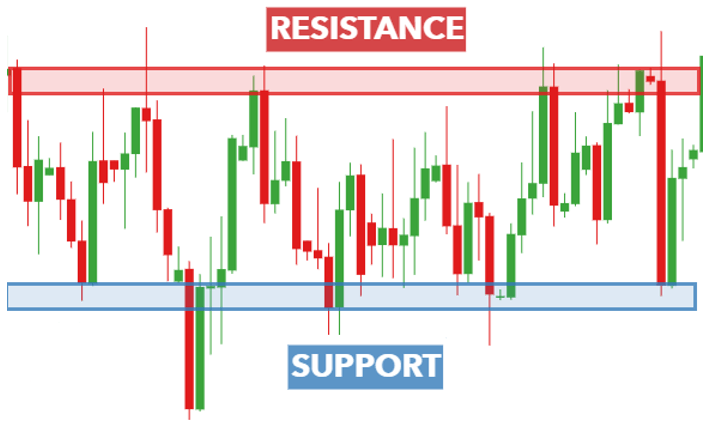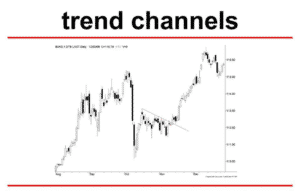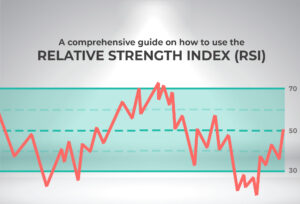One of the most often used trading ideas is “support and resistance”.
Surprisingly, everyone seems to have their own opinion on how S&R should be measured.
Let’s start with the fundamentals.
Take a look at the illustration above. This zigzag pattern is ascending (a “bull market”), as you can see.
The highest point hit before the price dropped back is now resistance when it climbs up and then pulls back.
Where there is an excess of sellers, resistance levels imply.
When the price rises again, the lowest point reached before it begins to rise again will serve as support.
The presence of a surplus of buyers is indicated by support levels.
As the price swings up and down over time, resistance and support are generated in this manner.
During a decline, the opposite is true.
In the most basic way, this is how S&R are normally traded:
Trade the “Bounce”
- Buy when the price falls towards support.
- Sell when the price rises towards resistance.
Trade the “Break”
- Buy when the price breaks up through resistance.
- Sell when the price breaks down through support.
A “bounce” and “break”? Say what? If you’re a little bit confused, no need to worry as we will cover these concepts in more detail later.
Plotting Support and Resistance Levels
It’s important to keep in mind that S&R levels are not exact figures.
Frequently, you’ll notice a support or resistance level that appears to be breached, only to discover that the market was simply testing it.
The candlestick shadows are frequently used to indicate these “tests” of support and resistance on candlestick charts.
Take note of how the candle shadows tested the 1.4700 support level.
It appeared at the moment that the price was “breaking” support.
In retrospect, we can see that the price was simply attempting to reach that level.
So how do we truly know if support and resistance were broken?
This question has no definitive answer. Some say that a support or resistance level has been breached if the price can close above it. You will, however, discover that this is not always the case.
Let’s revisit our previous example and observe what happened when the price closed over the 1.4700 support level.
The price had closed below the 1.4700 support level on this occasion, but it eventually rose over it.
If you had sold this pair believing it was a true breakout, you would have been in big trouble!
Looking at the chart presently, you can observe and conclude that the support was not broken; it is still very much intact and has become much stronger.
Support was “breached,” but only for a short time.
Support and resistance should be thought of as “zones” rather than precise figures to assist you to filter out false breakouts.
Plotting S&R on a line chart rather than a candlestick chart can help you discover these zones.
The reason for this is that line charts just display the closing price, whereas candlestick charts also display extreme highs and lows.
These highs and lows might be deceiving because they are often just the market’s “knee-jerk” response.
It’s like when someone does something odd, but when questioned about it, they simply say, “Sorry, it’s just a reflex.”
You don’t want the market’s reflexes while calculating S&R. You just want to track its deliberate movements.
Plot your support and resistance lines on the line chart around locations where you can observe the price generating many peaks or dips.
Other interesting tidbits about support and resistance:
- When the price goes through resistance, it has the ability to turn into support.
- The stronger a level of resistance or support is, the more price challenges it without breaking it.
- The intensity of the follow-through move when a support or resistance level breaks is determined by how strong the broken support or resistance had been holding.
You’ll be able to recognize possible forex support and resistance regions with a little practice.
Looking for a highly rated forex fund manager?
Fx Pips Guru has a strong group of forex experts who are managing forex accounts of our clients from different brokers dedicatedly. Just hire our forex fund managers here : https://www.fxpipsguru.com/forex-fund-manager/ .




